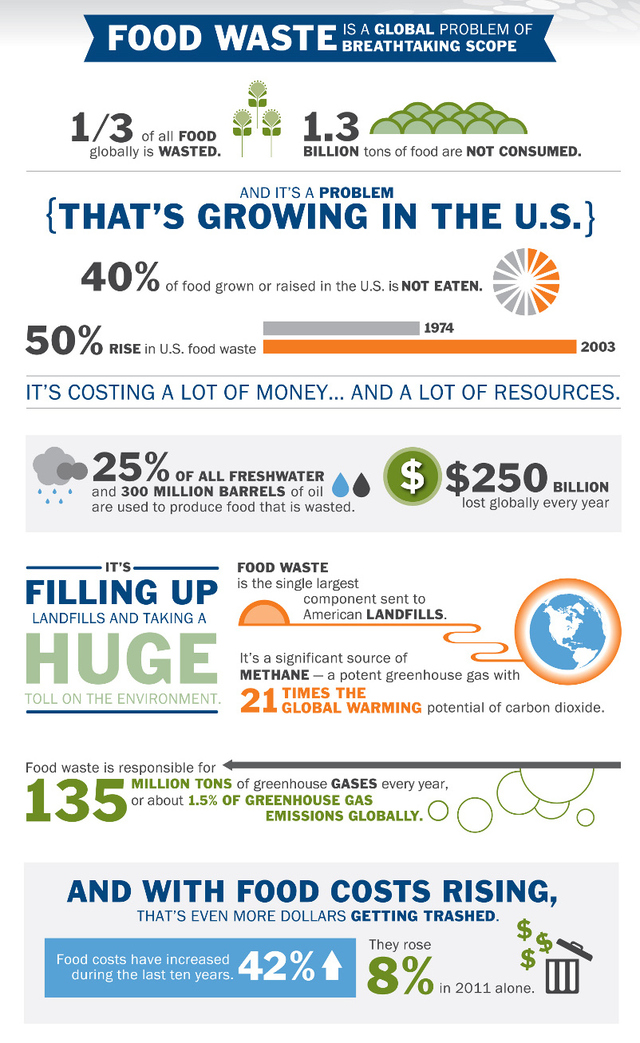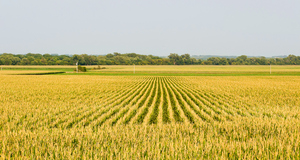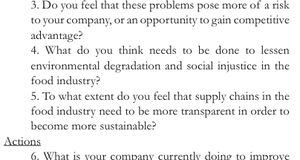Student VoicesThe Consequences of Food Waste
By
2014, Vol. 6 No. 04 | pg. 1/3 | »
IN THIS ARTICLE
KEYWORDS
The copious amounts of forgotten and disregarded food that are tossed mindlessly into our landfills are a global travesty of massive proportions. Americans alone waste enough food in a day to transform the Rose Bowl, a football stadium capable of seating 90,000 people, into a landfill (Bloom, 2010). As an affluent nation, securely cushioned by wealth and privilege, America expends vast resources to feed its population, producing over 590 billion pounds of food annually and simultaneously squandering between 25 and 50 percent of the food that is produced (Bloom, 2010). In a recent study by the Stockholm International Waster Institution, it was discovered that the US alone produces enough food to sustain roughly 860 million hungry people, more than twice the amount needed to feed the true population of the United States (Bloom, 2010). And the higher the population soars, the more surplus food is produced. Between 2009 and 2030, the World Bank estimates that the demand for food will increase by 50% as the global population grows, creating a positive feedback loop resulting in further waste (Menas, Adenso-Diaz & Yurt, 2011). Farmers will fall into a tailspin as they try desperately to provide enough food not only to feed the many gaping mouths, but also to satisfy our desperate, mindless addiction to surplus. Undervalued, underreported, and unseen, the hidden externalities of food waste are complex and detrimental to global health.  Graphic: FoodWasteStats.com Graphic: FoodWasteStats.comThe Problem with Food WasteThe collateral damage of food waste far exceeds a mere loss of potential caloric intake; like a broken motor hungrily guzzling resources, the waste of food is an exponential loss of resources. Conquering and pillaging fields, industrial agriculture has usurped the power of the sun, hijacking the natural food chain and instilling a system that has an unhealthy dependence on oil (Pollan, 2006). In a 2007 report, the United States Department of Agriculture found that over 100 quadrillion Btu of energy were used by the U.S economy; of which 85 percent originated from fossil fuels (Canning, Charles, Huang, Polenske, Waters, 2010). At the same time, data from recent studies reveal that the energy flow of the food network “rose significantly over the past decade, reaching 19 percent of the national energy budget” (Canning, Charles, Huang, Polenske, Waters, 2010). Behind every calorie of food consumed or left to rot, there is an oily after-taste left behind. But more than just devouring oil, industrial agriculture is destroying the fertility and regenerative nature of soil, degrading precious ecosystems, and guzzling valuable water resources. The use of tree-felling, clear cutting, and chemical additives in agriculture destroy the earth’s regenerative and sustainable properties and deplete soil twenty-times faster than nature can restore it (McDonough & Braungart, 2002).Behind every calorie of food consumed or left to rot, there is an oily after-taste left behind. Acidification and salinization resulting from inappropriate use of nitrogen fertilizers and the removal of beneficial vegetation destroy nutrient cycles within the soil and cause once rich landscapes to become dry, arid plains; unfit to house life (“Salinity and acidity”). Produce wasted in affluent countries such as Europe and the United States lead to unneeded loss of soil fertility and unnecessary expenditures of fresh water. The cost of producing such vast global food waste equates to farmers withdrawing approximately 675 trillion liters of water from wells, rivers and lakes, or enough water for 9 billion people to use 200 liters a day (Stuart, 2009). The United States alone uses roughly 25% of the entire fresh water supply to produce food that is thoughtlessly wasted (Gunders, 2012). Simultaneously, as the production of food destined for trashcans destroys soil fertility and drains fresh water supplies, the waste of fresh produce found in Europe and North America causes backlash in other countries. In the years 2007 and 2008, European and U.S. demand for excessive amounts of food increased the value of agricultural land found in Brazil, enticing Brazilians to cut down the rainforest in favor of creating more agricultural land (Stuart, 2009). This loss of ecosystem services is detrimental to global health, driven by the demand for meat, soy and vegetable oil from palms. Brazil’s deforestation cripples the Amazon and accounts for 75% of Brazil’s emissions, making it the 4th largest emitter of carbon dioxide in the world (Stuart, 2009). Thus, the problem of food waste cannot be illustrated without describing the immense emissions of greenhouse gases that accompany the overproduction and underutilization of food resources. The developed world in particular speeds the process of global warming by squandering such large amounts of food. Food waste is buried in landfills, where it decomposes into “into toxic effluent and methane, a greenhouse gas twenty-one times more potent than carbon dioxide” (Stuart, 2009). Landfills within the United States account for over 20% of all methane emissions, while an additional 14% of U.S emissions derive from food processes such as growing, transportation, disposal and food manufacturing ("Reducing food waste"). Totaled, 34% of the United States’ greenhouse gas emissions are due to the food waste cycle, where gross overproduction of food leads to higher inputs of C02 producing energy and larger amounts of food in landfills (Oliver, 2007). Similarly, the carbon footprint of food waste in UK households was found to equate roughly 18 million tons of carbon dioxide leached into the atmosphere. More notable than the cosmic amounts of Co2 and methane emitted into the atmosphere due to the food system, is that an estimated 61% of landfill food is unnecessary waste that could very well have been eaten before contributing to global warming (Stuart, 2009). While disposal and waste of food is a problem of global concern, unethical food waste is not only a humanitarian concern; it is also an economic and environmental problem. The excessive amounts of food wasted could feed millions of hungry people, yet affluent countries such as the United States spend over 165 billion dollars a year on the production of food that is never eaten as well as an additional 750 million dollars a year to dispose of unwanted food (Gunders, 2010). Further complicating the problem are the unseen inputs that are necessary to create food that is predestined for the trash. Producing food that is squandered also wastes important finite resources such as oil, freshwater, soil fertility, land, various ecosystem services as well as undocumented human labor. Understanding the true price tag that accompanies food waste is the first step toward creating a sustainable food system.Continued on Next Page » Suggested Reading from Inquiries Journal
Inquiries Journal provides undergraduate and graduate students around the world a platform for the wide dissemination of academic work over a range of core disciplines. Representing the work of students from hundreds of institutions around the globe, Inquiries Journal's large database of academic articles is completely free. Learn more | Blog | Submit Latest in Opinion |
















